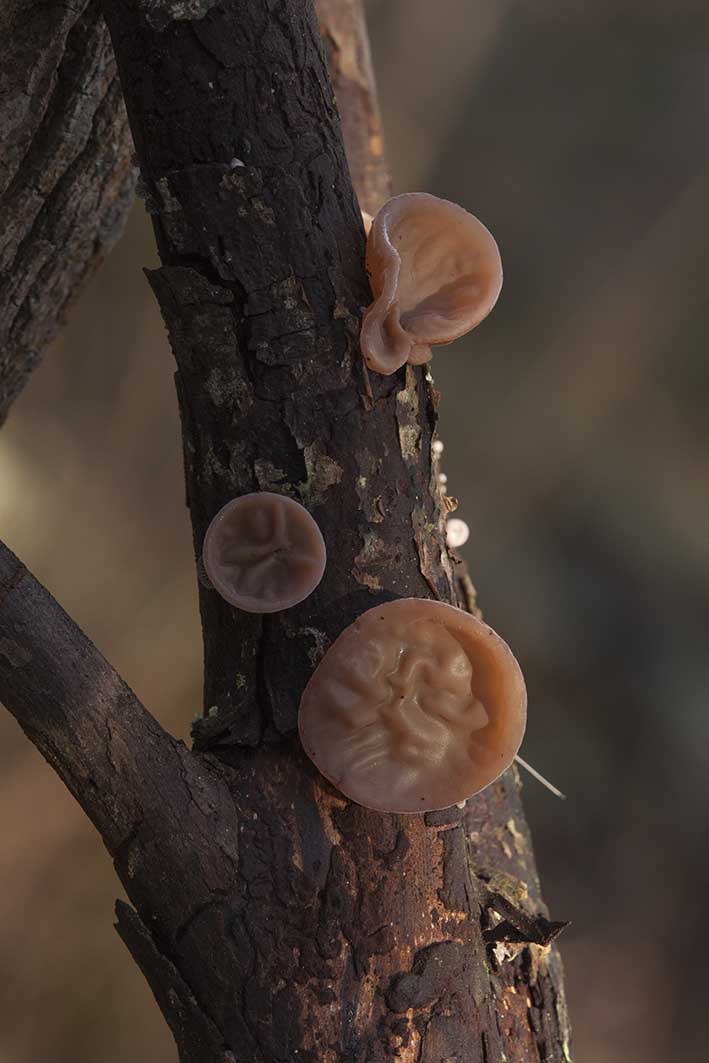

The Jelly Ear Fungus was described scientifically in 1789 by Jean Baptiste François (Pierre) Bulliard, who named it Tremella auricula-judae. Modern medicine has found that the mushroom can prevent blood clotting (there have even been some reports of internal bleeding in sensitive people after eating too much of this mushroom), prevent heart attacks, prevent strokes, and lower blood cholesterol.Īpparently, Auricularia Auricula-judae negatively impacts fertility, so people who are trying to conceive and women who are pregnant or lactating may want to avoid this mushroom. In Europe, the mushroom was used to treat throat and eye ailments. Polysaccharide Herein of Wood ear mushrooms can be used as an oral drug deliveryĪntiviral properties of Wood ear mushrooms due to sulfated polysaccharideĪuricularia Auricula-judae has also been used in herbal medicine. Radioprotective properties due to melanin pigments Wood ear mushrooms lower the cholesterol level This species of mushroom has a tough, gelatinous, elastic texture when fresh and the outer surface is a bright reddish-brown with a purplish hint, often covered in tiny, grey downy hairs and unsurprisingly it bears an uncanny resemblance to an ear!Īlso extensively used in Asian cuisine, the Wood Ear Mushroom has a crisp texture and mild woody flavor making it a delicious addition to stir-fries, soups, and salads.Īntibacterial properties of Wood ear mushroomsĪctive component diazane in Wood ear mushrooms possess antitumor properties Wood Ear mushrooms have been a staple in Traditional Chinese Medicine for thousands of years. Wavy and irregular often more or less ear-shaped but sometimes oval, elliptical, fan-shaped, cup-shaped, or irregular in outline 2–5 cm across thin usually gathered together and attached at a central or lateral position upper, fertile surface brown to reddish-brown, bald, sometimes wrinkled in places lower, sterile surface finely hairy when fresh and young, creating a whitish bloom over the brown to reddish-brown surface flesh thin, gelatinous-rubbery entire fruiting body becoming hard and black when dried out.Īuricularia Auricula-judae Health Benefits Saprobic on decaying hardwood sticks, logs, and stumps spring, summer, and fall distribution in North America uncertain, since the species has previously been folded in with others as "auricula" or "auricula-judae." The illustrated and described collections are from Illinois. It is easily available in dried form in almost every oriental food store, in specialty food markets, and even in many large grocery stores.Īuricularia auricula-judae sometimes called the chinese morel, although it is not related to morels.Īuricularia auricula-judae Identification However, it certainly can be much larger and tends to grow in subtropical to tropical areas. It seems likely that Auricularia polytricha, cultivated for use in Oriental dishes, is a very close relative or even the same species. Sometimes the scientific name is listed as Hirneola auricula. Since the mushroom is particularly prevalent on menus in Oriental restaurants, more preferred names would be the "wood ear mushroom" or the "cloud ear mushroom," Some would consider other translations of the name perjorative, and hence I have not mentioned them here.

In fact "Auricularia" means ear and the epithet "auricula-judae" means "the ear of Judas." However, the intriguing name has stuck, even with the normally stuffy taxonomists. Obviously, someone had an overactive imagination when seeing an ear on a tree and thinking of Judas. If you don't remember your New Testament (or care about it), Judas was the apostle who betrayed Jesus for 30 pieces of silver. The common name Judas's ear comes from the legend that Auricularia formed its ear-shaped fruiting bodies as a curse on the tree on which Judas hanged himself. The surface is smooth, wrinkled towards the center. Jew's Ear is a gelatinous cup fungus, ear-shaped, generally purplish grayish brown to dingy brown and 2-15cm broad. Nevertheless, he is highly prized in Asia and is commonly used in soups as it takes on the taste of condiments very well. When eaten by itself, it is not remarkably flavourful. All of the jelly fungi are Basidiomycota with an unusual jelly-like texture. About The Auricularia auricula-judae MushroomĪuricularia auricula-judae, is one of the jelly fungi.


 0 kommentar(er)
0 kommentar(er)
